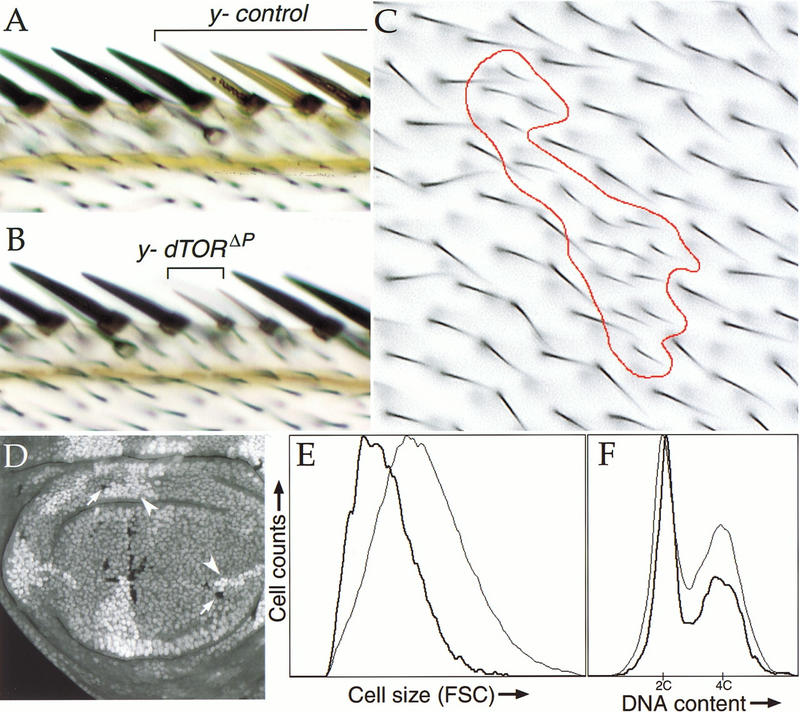Figure 3.
dTOR clonal phenotypes. (A–C) Loss of dTOR reduces the size of cells in the adult wing. Clones of y−-marked wild-type (A) or dTORΔP (B,C) cells were induced during the first larval instar by FLP/FRT-mediated mitotic recombination. Representative clones including bristles of the wing margin (A,B) and epithelial cells of the wing blade (C) are shown. The red trace in C outlines a dTORΔP mutant clone. Each hairlike structure is a trichome emanating from a single epithelial cell. Note the reduced size and increased density of dTOR cells. Genotype of A–C: y,w, HS-FLP122/+; dTORΔP FRT40A/Py+ FRT40A. (D–F) Phenotypes of dTOR mutant cells during proliferation. (D) Confocal image of wing imaginal disc containing dTORΔP clones marked with ubiquitin–GFP. By 72 h after induction, dTORΔP mutant clones (indicated by arrows; cells lack marker) contain fewer cells than their wild-type twinspot clones (indicated by arrowheads; cells carry two copies of GFP marker). (E,F) FACS histograms of dissociated cells from wing discs containing dTORΔP clones, as in D. dTORΔP cells and wild-type control cells are indicated by heavy and light traces, respectively. Cells lacking dTOR have reduced forward light scatter (FSC) values, indicating a smaller cell size (E). Populations of dTOR mutant cells also have a lower fraction of cells in S and G2 phases of the cell cycle (F). Genotype of D–F: y, w, HS-FLP122/+; dTORΔP FRT40A/Ubi-GFP FRT40A.

